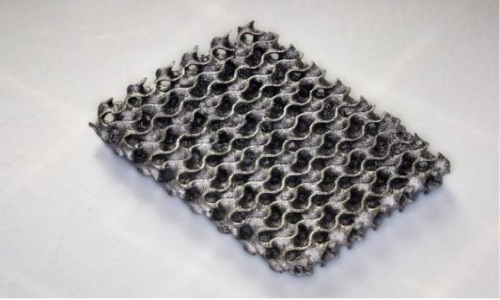


 10:42:38
10:42:38  2025-06-14
2025-06-14  725
725

A team at the University of Bristol developed SLCFETs, a breakthrough transistor structure that leverages a latch effect in GaN materials to enhance speed and power, advancing the future of 6G.
Self-driving cars that eliminate traffic jams, receiving a healthcare diagnosis instantly without leaving your home, or feeling the touch of loved ones across the continent may sound like science fiction.
However, new research led by the University of Bristol and published in the journal Nature Electronics could bring these possibilities closer to reality, thanks to a groundbreaking breakthrough in semiconductor technology.
These futuristic concepts depend on the ability to communicate and transfer vast amounts of data much faster than current networks allow. To support this, physicists have developed an innovative method to speed up data transmission among many users, potentially on a global scale.
Endless possibilities powered by innovation
Co-lead author Martin Kuball, Professor of Physics at the University of Bristol, said: “Within the next decade, previously almost unimaginable technologies to transform a wide range of human experiences could be widely available. The possible benefits are also far-reaching, including advances in healthcare with remote diagnostics and surgery, virtual classrooms and even virtual holiday tourism.
“In addition, there is considerable potential for advanced driver assistance systems to improve road safety and industrial automation for greater efficiency. The list of possible 6G applications is endless, with the limit just being human imagination. So our innovative semiconductor discoveries are hugely exciting and will help drive forward these developments at speed and scale.”
It is widely recognized that moving from 5G to 6G will require a major upgrade in semiconductor technology, circuits, systems, and related algorithms. For example, the key semiconductor components involved—radio frequency amplifiers made from a material known as Gallium Nitride (GaN)—must become significantly faster, produce more power, and operate with greater reliability.
Unlocking next-generation amplifier power
The team of international scientists and engineers tested a new architecture that significantly boosted the performance of GaN amplifiers. This breakthrough was made possible by discovering a latch-effect in GaN, which led to a major improvement in radio frequency device performance. These next-generation devices use parallel channels, which require sub-100nm side fins—a type of transistor that controls the flow of current through the devices.
Co-lead author Dr. Akhil Shaji, Honorary Research Associate at the University of Bristol, explained: “We have piloted a device technology, working with collaborators, called superlattice castellated field effect transistors (SLCFETs), in which more than 1000 fins with sub-100 nm width help drive the current. Although SLCFETs have demonstrated the highest performance in the W-band frequency range, equating to 75 gigahertz -110 GHz, the physics behind it was unknown.
“We recognized it was a latch-effect in GaN, which enables the high radio frequency performance.”
Discovering and validating the latch effect
The researchers then needed to pinpoint exactly where this effect occurred, by simultaneously using ultra precision electrical measurements and optical microscopy, so it could be further studied and understood. After analyzing more than 1,000 fins, the findings located this effect to the widest fin.
Prof Kuball, who is also Royal Academy of Engineering Chair in Emerging Technologies, added: “We also developed a 3D model using a simulator to further verify our observations. The next challenge was to study the reliability aspects of latch effect for practical applications. The rigorous testing of the device over a long duration of time showed it has no detrimental effect on device reliability or performance.
“We found a key aspect driving this reliability was a thin layer of dielectric coating around each of the fins. But the main takeaway was clear – the latch effect can be exploited for countless practical applications, which could help transform people’s lives in many different ways in years to come.”
Looking ahead to future applications
Next steps for the work include further increasing the power density the devices can deliver, so they can offer even higher performance and serve wider audiences. Industry partners will also be bringing such next generation devices to a commercial market.
Researchers at the University of Bristol are at the forefront of improving electrical performance and efficiency in a wide range of different applications and settings.
Professor Kuball leads the Centre for Device Thermography and Reliability (CDTR), which is developing next generation semiconductor electronic devices for net zero, and for communications and radar technology. It also works on improving device thermal management, electrical performance, and reliability, using wide and ultra-wide bandgap semiconductors.
Reality Of Islam |
|

Water may s

"It is

The process

Astronomers
 9:3:43
9:3:43
 2018-11-05
2018-11-05
10 benefits of Marriage in Islam
 7:5:22
7:5:22
 2019-04-08
2019-04-08
benefits of reciting surat yunus, hud &
 9:45:7
9:45:7
 2018-12-24
2018-12-24
advantages & disadvantages of divorce
 11:35:12
11:35:12
 2018-06-10
2018-06-10
 6:0:51
6:0:51
 2018-10-16
2018-10-16
 9:42:16
9:42:16
 2022-10-19
2022-10-19
 6:0:8
6:0:8
 2023-03-19
2023-03-19
 7:26:19
7:26:19
 2022-04-08
2022-04-08
 4:26:43
4:26:43
 2022-02-21
2022-02-21
 10:55:53
10:55:53
 2022-06-13
2022-06-13
 7:34:7
7:34:7
 2023-02-28
2023-02-28
 7:6:7
7:6:7
 2022-03-21
2022-03-21
 5:41:46
5:41:46
 2023-03-18
2023-03-18
| LATEST |